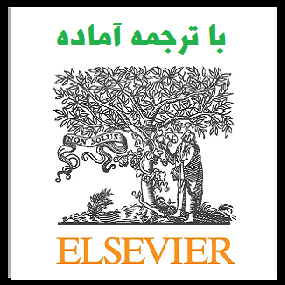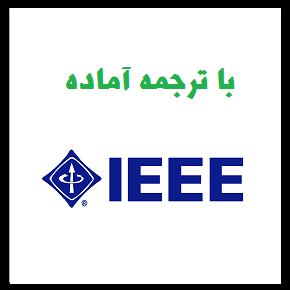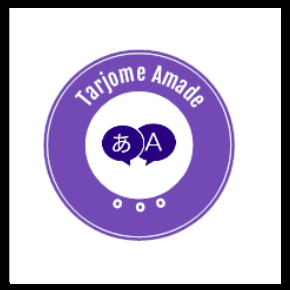مقاله ارتباط ویژگی های اوتیستیک میان والدین و کودکان دارای اختلال طیف اوتیسم و عادی (2022 الزویر)


| عنوان فارسی مقاله | ارتباط ویژگی های اوتیستیک میان والدین و کودکان دارای اختلال طیف اوتیسم و عادی |
| عنوان انگلیسی مقاله | Relationship of autistic traits between parents and children with and without autism spectrum disorder |
| فهرست مطالب | چکیده 1. مقدمه 2. روش ها 3. نتایج 4 بحث 5 نتیجه گیری منابع |
| نمونه مقاله انگلیسی | Abstract
Background: Although parents with a child with autism spectrum disorder (ASD) have usually been identified as having the “broader autism phenotype”, empirical research on the differences in autistic-like characteristics between parents with and without ASD children has yielded inconsistent results. Method: This survey of the autistic traits of parents and children was conducted in 119 parents with ASD children and 108 parents with typically developing (TD) children. Parents’ autistic traits were quantified using the Autism-Spectrum Quotient and children’s autistic traits were quantified using the Autism Spectrum Quotient—Children’s Version. Results: The autistic traits of ASD children were significantly higher than those of the TD children; however, autistic traits were similar between parents in the two groups. Furthermore, the correlations of autistic traits between parents and children were only significant for the TD group and not for the ASD group. Conclusions: The current findings indicate that the relationship of autistic traits between parents and children exists in the TD group, and that the Autism-Spectrum Quotient may be used for parents as a screening aid to identify children who should be further screened for autistic traits. Introduction Autism spectrum disorder (ASD) is a type of developmental disorder, diagnosed on the basis of difficulties in social interactions, the presentation of repetitive behavior and activities, as well as unusually narrow, strong interests (American Psychiatric Association, 2013). ASD involves a large number of behaviors and symptoms that vary across individuals. In the clinical condition, the severity of ASD presents across a continuum, and the quantifiable features of the full autism phenotype (i.e. autistic traits) included in the ASD core deficits are continuously distributed in typically developing (TD) individuals (Lazar, Evans, Myers, Moreno-De Luca, & Moore, 2014). The main measurement tools for autistic traits include The Autism-Spectrum Quotient (AQ; Baron-Cohen, Wheelwright, Skinner, Martin, & Clubley, 2001), the Broader Phenotype Autism Symptom scale (BPASS; Dawson et al., 2007), the Social Responsiveness Scale (SRS; Constantino, 2002), and the Broad Autism Phenotype Questionnaire (BAPQ; Hurley, Losh, Parlier, Reznick, & Piven, 2007). One of the most widely used instruments for quantifying autistic traits in non-clinical adults of normal intelligence is AQ (Ruzich et al., 2015). The AQ is a self-report questionnaire consisting of 50 items, with five sub-scales (Social Skills, Attention Switching, Attention to Detail, Communication, and Imagination) representing five different aspects of the behaviors and cognitive difficulties that are most commonly found in individuals with ASD. The AQ has been found to show good reliability and validity across cultures, including in China (Zhang et al., 2016). The Autism Spectrum Quotient-Children’s Version (AQ-Child) (Auyeung, Baron-Cohen, Wheelwright, & Allison, 2008) is one of the most widely used parent-reported instruments for quantifying autistic traits in children 4–11 years old. The AQ-Child similarly has 50 items with five identical sub-scales to the AQ. There is strong support for the validity of the AQ-Child in both Western (Auyeung et al., 2008) and Eastern (Rudra et al., 2014; Sun et al., 2019) cultures. |
| نمونه ترجمه فارسی | چکیده
زمینه: با این که معمولاً “فنوتیپ اوتیسم گسترده تری” در والدین دارای فرزند مبتلا به اختلال طیف اوتیسم (ASD) تشخیص داده شده است، ولی پژوهش تجربی روی تفاوت های ویژگی های شبه-اوتیستیک میان والدین دارا و بدون فرزندان ASD به نتایج متناقضی را به دست داده است. روش: این مطالعه با هدف بررسی ویژگی های اوتیستیک والدین و فرزندان، روی 119 والد با فرزندان مبتلا به ASD و 108 والد دارای فرزندانی با رشد عادی (TD) انجام شد. ویژگی های اوتیستیک والدین با استفاده از ضریب طیف اوتیسم، و ویژگی های اوتیستیک فرزندان با استفاده از ضریب طیف اوتیسم- نسخه ی کودکان، ارزیابی شد. نتایج: ویژگی های اوتیستیک کودکان مبتلا به ASD به طور قابل توجهی از کودکان TD بالاتر بود. با این حال، ویژگی های اوتیستیک میان والدین در هر دو گروه مشابه بودند. بعلاوه، ارتباط ویژگی های اوتیستیک میان والدین و فرزندان تنها در مورد گروه TD قابل توجه بود ولی در مورد گروه ASD این گونه نبود. نتیجه گیری ها: یافته های کنونی حاکی از این است که میان ویژگی های اوتیستیک والدین و فرزندان در گروه TD رابطه وجود دارد و ضریب طیف اوتیسم می بایست برای والدین به عنوان یک غربالگری کمکی به منظور شناسایی کودکانی مورد استفاده قرار گیرد که برای بررسی ویژگی های اوتیستیک نیاز به غربالگری بیشتر دارند. 2. روش ها 2.1. شرکت کنندگان تمامی شرکت کنندگان، والدین چینی 23 تا 48 ساله با حداقل یک کودک 4 تا 10 ساله بودند (جدول 1 را ملاحظه فرمایید). در راستای بیانیه ی هلسینکی، شرکت کنندگان موافقت کردند تا در مطالعه شرکت کنند؛ تمامی روال ها به تایید کمیته ی اخلاق پژوهشی دانشگاه چونگپینگ نرمال رسید. گروه والدینASD- متشکل از 119 والد (میانگین: 33.43 سال، SD= 4.85 سال) با فرزندان SD (میانگین= 5.08 سال، SD = 1.67 سال) از بیمارستان وابسته ی بیمارستان پزشکی جینینگ و مرکز بازپروری جامع زواژوانگ معلولان در شاندونگ، چین به کار گرفته شده بودند. متخصصین اطفال مجاز بیمارستان، بر اساس معیار نسخه پنجم راهنمای تشخیصی و آماری اختلالهای روانی(DSM-5) برای تمامی این کودکان تشخیص ASD داده بودند. تشخیص ASDکودکان در زمان این مطالعه با استفاده از چک لیست رفتار اوتیسم(ABC) (Frye & Walker, 1998; Krug, Arick, & Almond, 1980) و مقیاس درجه بندی اوتیسم کودک(CARS) (Schopler, Reichler, DeVellis, & Daly, 1980; Zhou et al., 2017) مجدداً تایید شد. گروه والدین TD متشکل از 108 والد (میانگین= 32.41 سال، SD= 3.39 سال، تطبیق داده شده از لحاظ سنی و سطح تحصیلات با گروه والدین SD) با فرزندان TD (میانگین= 5.17 سال، SD= 1.38 سال) به صورت تصادفی از مهدکودک ها و مدارس ابتدایی در چونگپینگ، چین به کار گرفته شده بودند. آن ها هیچ گونه مشکل سلامت روان را نه در خود و نه در کودکان شان گزارش ندادند. وضعیت این والدین و کودکان توسط پژوهشگران مجاز این مطالعه مجددا تایید شد. توجه؛ (همانطور که در نمونه ترجمه مشاهده مینمایید، این ترجمه توسط مترجم مجرب با رشته مرتبط به صورت کاملا تخصصی انجام شده و ادامه مقاله نیز به همین صورت با کیفیت عالی در فرمت ورد و pdf آماده خریداری و دانلود میباشد.) |
| سال انتشار | 2022 |
| ناشر | الزویر |
| مجله | Research in Autism Spectrum Disorders |
| کلمات کلیدی انگلیسی | Autism spectrum disorder – Autism Spectrum Quotient – Autism Spectrum Quotient—Children’s Version – Autistic traits – Broader autism phenotype |
| کلمات کلیدی | اختلال طیف اوتیسم – ضریب طیف اوتیسم – ضریب طیف اوتیسم – نسخه ی کودکان – ویژگی های اوتیستیک – فنوتیپ اوتیسم گسترده تر |
| صفحات مقاله انگلیسی | 8 |
| صفحات ترجمه مقاله | 17 (2 صفحه رفرنس انگلیسی) |
| مناسب برای رشته | روانشناسی – پزشکی |
| مناسب برای گرایش | روانشناسی رشد – پزشکی کودکان – مغز و اعصاب |
| توضیحات | این مقاله ترجمه شده و فایل تایپ شده با فرمت ورد آن آماده خریداری و دانلود میباشد. |
| دانلود مقاله انگلیسی | ○ دانلود رایگان مقاله انگلیسی با فرمت pdf (کلیک کنید) |
| خرید ترجمه فارسی | ○ خرید ترجمه آماده این مقاله با فرمت ورد (کلیک کنید) |
| سایر مقالات این رشته | ○ مشاهده سایر مقالات رشته روانشناسی (کلیک کنید) |



